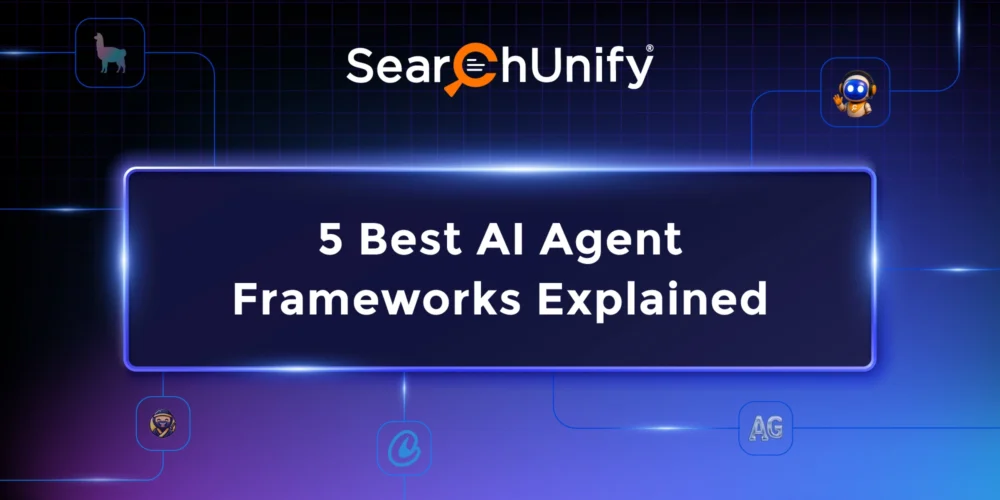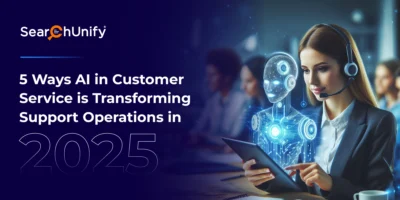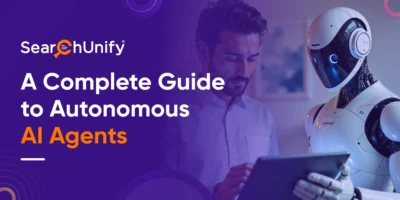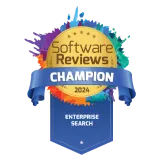
AI agents are reshaping the way businesses work by thinking, learning, and acting autonomously to achieve goals and solve problems. This transformation is powered by AI agent frameworks.
From improving customer support to customizing user experiences or reducing manual workloads, AI agent frameworks help you make the most of cutting-edge large language models (LLMs) and transform ordinary operations into something extraordinary.
Let’s explore the 5 best AI agent frameworks that are making a significant impact today. But before that, let’s first clarify what an AI agent framework really is.
What is an AI Agent Framework and Why Do We Need It?
AI agents are powered by large language models (LLMs), but LLMs alone aren’t enough to solve complex problems. An AI agent framework provides the tools, structure, and components needed to enable these LLMs to act autonomously, turning them into adaptable, purposeful digital teammates that can collaborate, make decisions, and maximize enterprise value.
It guides their decision-making, helps them collaborate, and lets them adapt to changing goals or environments, turning large language models into powerful, purposeful digital teammates.
Top 5 AI Agent Frameworks
Here are 5 best AI agent frameworks that are making a significant impact today:
SearchUnify’s Agentic AI Platform (SEAP)
Primary Benefit: Enterprise-ready orchestration with multi-agent collaboration and continuous learning
Primary Use Case: Autonomous customer support agents handling end-to-end workflows, from understanding queries to resolving tickets and integrating with business systems.
SEAP is a proprietary platform for deploying intelligent, multi-modal agents that autonomously sense, reason, plan, act, and learn. Powered by SearchUnifyFRAG™, plugin integrations, and continuous feedback loops, these agents go beyond basic Q&A to handle task decomposition, knowledge retrieval, and workflow execution. With advanced prompt engineering and reinforcement learning, SEAP enables scalable, personalized, and context-aware support automation.
LlamaIndex
Primary Benefit: Orchestration for data-intensive workloads
Primary Use Case: Customer service chatbots retrieving policy details from enterprise documents.
LlamaIndex is a data orchestration framework tailored for generative and agentic AI. Its new workflow feature supports asynchronous, event-driven steps, allowing for flexible, state-aware agents that can adapt to evolving goals or revert to previous tasks when needed.
AutoGen
Primary Benefit: Collaborative multi-agent orchestration
Primary Use Case: Collaborative financial portfolio design by multiple expert agents.
Microsoft’s AutoGen enables the creation of scalable multi-agent systems. It offers a layered architecture with Core for agent workflows, AgentChat for conversations, and Extensions for customization, making it ideal for enterprise-grade, distributed agent ecosystems. AutoGen’s prototyping and performance benchmarking tools aid in developing sophisticated, team-like digital collaborators.
CrewAI
Primary Benefit: Role-specific orchestration
Primary Use Case: Collaborative team campaigns (such as market analysis or content production).
CrewAI brings a role-based structure to agentic workflows. Agents are assigned clear roles and responsibilities, with workflows that can be sequential or hierarchical, making it especially helpful for multi-agent collaboration on complex projects.
SuperAgent
Primary Benefit: Developer-friendly orchestration with multiple integrations
Primary Use Case: Building AI workflows using OpenAI, Pinecone, LangChain, and other tools.
SuperAgent is an open-source framework that lets developers create, manage, and deploy AI agents through a user-friendly UI or APIs. Its flexibility and lightweight design make it ideal for rapidly prototyping and deploying production-grade agents with support for LLMs and vector databases.
Pro Tip:
When choosing an AI agent framework, prioritize performance and scalability, seamless integration, ease of use, data privacy, and support for retrieval-augmented generation (RAG) to enable your agents to operate efficiently across knowledge bases and adapt to evolving enterprise needs.
Conclusion
AI agent frameworks enable enterprises to go beyond simple automation and empower their teams with adaptable, collaborative, and context-aware digital assistants. As these frameworks continue to grow and improve, they will become a key tool for optimizing operations, strengthening decision-making, and delivering greater value across a range of business scenarios.










